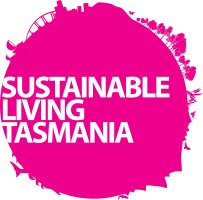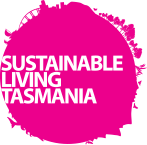Ideas for taking action and making a positive impact in your everyday life.
We’re all becoming more aware for the need to live sustainably, and many of us are already making changes, such as recycling rubbish, growing our own vegetables, shopping local and making ethical choices when we shop. In fact, there are many things we can do at home to be more sustainable and reduce our impact on the environment.
Here are some simple tips and links to websites to help you to live a more sustainable lifestyle … small, actionable ideas that can make a big impact.
Sorry to be the bearer of bad news. We know many Tasmanians love the idea of using batteries to store energy from their solar panels and be less dependent on the grid. However, both financially and environmentally, it simply doesn’t stack up.
Financial
After evaluating the best battery deals on the market, we can’t find any that will save you as much money over their lifetime as they cost you upfront. Even the least bad option we’ve examined (the Tesla Powerwall 2), will recoup less than half of the upfront cost when the warranty expires after 10 years, and has a payback period of 36 years (and it may not last that long). You can download our calculator here (Excel) to see the calculations.
Now, of course, things will change… battery prices will likely come down, and the price difference between what you’re paid for feeding solar into the grid and what you pay to buy electricity from the grid could get bigger (we’ve modeled both prices rising by 2% p.a.). Both of these factors would improve the financial case for batteries; but as things stand now, the financial case is terrible.
If you experience regular blackouts, then achieving more reliable electricity may be worth the cost of batteries. However, note that running a battery for backup purposes means keeping it charged in case there is a blackout, rather than using it to save money. Also, the power you can draw from a battery system is limited, often to only 3kW, which may not be enough (e.g. if you’re running a couple of heaters). If you only experience the occasional blackout (I’ve had just one two-hour blackout over five years in Claremont), then batteries are an extremely expensive way to partially overcome a minor inconvenience.
Environmental
There are both positive and negative environmental impacts of installing batteries, but the negatives outweigh the positives in Tasmania.
On the mainland, energy storage (e.g. batteries) is absolutely necessary for the grid to reach anywhere near 100% renewable electricity. In Tasmania, that is simply not the case. Our hydro electric system stores an incredible amount of energy (the equivalent of a billion home battery systems!). As such, we don’t need any more storage whatsoever to reach 100% renewable electricity. Instead, what we need is more renewable generation (want to help? Reduce your energy consumption and/or install solar).
The only potentially positive impacts of installing batteries in Tasmania are:
- It helps to build the market for batteries, bringing the cost down so they are more affordable elsewhere. In reality, an individual household’s contribution toward this would be minimal, so it isn’t a good enough reason on its own. There are any number of alternatives you could spend your money on that would have much more positive impact, and they might even save you money instead of costing you like batteries will.
- At the end of long and weak grid connections (e.g. Bruny Island, Tasman Peninsula), by smoothing out the peaks and troughs in electricity demand, batteries may delay or altogether avoid the need to upgrade transmission infrastructure (poles, wires, transformers, etc). It is possible that this could bring a net positive environmental benefit. Note that this would also have a net positive economic benefit at the societal level, but you would personally be paying all of the financial cost and gaining only a small fraction of the financial benefit, with most of it shared among all electricity users in Tasmania.
On the flip side, there are negative environmental impacts of batteries, especially in terms of mining and manufacturing.
In summary, installing a battery system in Tasmania currently will lose you money and damage the environment in the process. However, if you haven’t already got a solar PV system – they are a good financial investment with positive environmental benefits, so we suggest you go for it!
Your Home is Australia’s independent guide to designing, building or renovating homes to ensure they are energy efficient, comfortable, affordable and adaptable for the future.
This guide will assist in providing information to ensure your home is a sustainable home that incorporates climate-appropriate design features like correct orientation, thermal mass, insulation, shading and glazing to take advantage of natural sources of heating and cooling, keeping you comfortable throughout the year.
Click here for information to assist with buying, building or renovating your home sustainably.
Feeling as though you are a part of a healthy, vibrant community is important. This builds a sense of place and belonging, which encourages and supports actions that improve the lives and livelihoods of all who are a part of it. Tasmania is filled with vibrant community groups, working to improve the health and wellbeing of its citizens and environment.
Why not visit the Community page and join a community group in your area.
As power prices rise, many of us are looking for ways to use less energy at home.
The good news is there are many simple, no-cost things you can do right now. By trying some of these ideas and making a few changes to everyday habits, you could save money and help the environment without sacrificing comfort. Click here to find helpful tips to save energy, and money.
lectric vehicles offer many benefits, both to the community and to their owners. The Australian Electric Vehicle Association has good resources on EVs: and on specific battery EV vehicle models.
The Australian Electric Vehicle Association (AEVA) LTD is a volunteer-run, not-for-profit organisation dedicated to the cause of switching Australia’s transport networks to electric drive as quickly as possible. We all share a common interest in electromobility and climate-friendly transport. Formed after the oil price shocks of 1973, the AEVA is the longest continuously running EV society in the world.
They represent all EV users and enthusiasts, current and prospective, and are more than happy to offer jargon-free advice on which EV is right for you. We also make regular submissions to government and industry about policies which will help transition to electric drive, and away from imported fossil fuels for transport.
Click here to visit their site
CHOICE has some interesting facts and suggestions to make your ethical shopping choices easier. Click here to make your purchase power support the issues you care about.
According to a recent report by the Australian Fashion Council, about 227,000 tonnes of discarded clothing is sent to landfill in Australia each year and only 7,000 tonnes is recycled. On top of that, more than 100,000 tonnes that cannot be sold in charity shops in Australia gets exported overseas each year. With synthetic fabrics taking hundreds of years to decompose, we all need to think before we buy. Here is an article that might put your next purchase in perspective.
Gardening is one of the best ways to reduce our ecological footprint as well being an extremely rewarding and rejuvenating pastime. Most of our food is transported long distances and grown using harmful chemicals. Growing your own food and buying locally not only supports your local community but greatly reduces carbon emissions, saves money and is more nutritious. Click here for a helpful facts sheet on gardening and growing your own food in Tasmania.
Are you looking to buy a new appliance?
Use the Energy Rating Calculator to estimate the running cost of a range of common household appliances. You can also compare the energy rating and running costs between products. Click here to start your calculations.
In 2020-21, Australia generated 75.8 megatonnes (Mt) of total waste (Planet Ark). The cost of food waste alone to the economy is estimated at $20 billion each year. We all need to take action on waste. Australian governments have committed to preparing a National Waste Policy and to work together to better manage waste. There are many actions that you can take at home to reduce waste and save money. Click here for some useful tips.
If you use an iPhone, this Light Bulb Saver App might help you to make a more sustainable and budget friendly choice.
The app helps you calculate how much money you can save by replacing your current lights with energy efficient alternatives, and offers tips to help in designing effective and efficient lighting solutions for each room in your home.
Find that app here.
The Clean Energy Council offers free guides on buying solar. Available for both households and businesses, their solar guides cover the important information you need to know when purchasing rooftop solar. Click here for more information.
There are lots of simple ways to reduce power costs – even if you live in a rental house. While each action is small, combined they can help save hundreds of dollars on your power bills. This booklet can help you to decide which options will work best for you.
Click here to download the booklet.
Transport is a significant cost for most Tasmanians and costs are projected to increase along with increasing oil prices. Transport is the largest source of carbon emissions in Tasmania. So, personal transport is an area where our daily habits and choices have a big impact. It may not be realistic to get rid of your car entirely, but we can all reduce our dependence on cars quite easily by carpooling, walking, cycling and taking public transport. What’s more, these actions save you money, reduce the hassles of traffic and parking, and improve your health!
A huge proportion of working Tasmanians drive to work in a typical day and they’re generally in a car all by themselves! This not only contributes to greenhouse gas emissions and air pollution, it also means that we need taxes spent on roads to cater for peak load traffic and a larger proportion of our urban environment allocated for parking.
Tasmanians are developing innovative solutions for traveling better. Cool Pool Tas connects people who are travelling in the same direction with one another so that they can carpool. The Hobart Bike Kitchen takes old and unwanted bikes of all persuasions and then helps people to rebuild and maintain them. There are electric bikes, which help eliminate the barrier of tackling Tassie’s hills and a huge selection of beautiful peddlies. Things are also happening at a Government level in this area to make cities more people friendly, such as Metro Park & Ride services and incentives for people to walk to work.
TOP TIPS
1. Reduce your car use for short trips. The majority of car trips made in Australia are for short trips of up to 3 kilometres. Choose to walk or cycle instead.
2. Slow down. Driving at 90 km/h rather than 110 km/h can save 25% on fuel.
3. Drive smoothly. Generally, fuel economy is maximised when acceleration and braking are minimised. So a fuel-efficient strategy is to anticipate what is happening ahead, and drive in such a way so as to minimise acceleration and braking, and maximise coasting time. Don’t push the car uphill. Avoid starting and stopping in traffic and try to keep your speed steady.
4. Choose a fuel-efficient vehicle. Obviously cycling, walking or taking public transport are better options, but when you have to drive choose a small, fuel-efficient vehicle. The Federal Government’s Green Vehicle Guide (www.greenvehicleguide.gov.au) is an excellent resource to determine the fuel efficiency of both new and used vehicles.
5. Carpool. Four people travelling in one vehicle rather than four individual vehicles will reduce fuel use by 75% and also significantly improve traffic flow. Cool Pool Tas allows you to connect with others in your area to organise regular carpooling or find someone travelling longer distances that you can ride share with.
DID YOU KNOW?
- Transport contributes more than one fifth of greenhouse gas emissions in Tasmania – almost 2 million tonnes a year to the atmosphere. Each year car size increases and the number of car trips increases
- The average household makes close to 10 car trips per day and this figure is steadily climbing. 40% of all journeys by car are 5 kilometres or less and could quite easily be replaced by walking or cycling. If you reduce the number of car trips even by a third, you will save car fuel and maintenance costs and at the same time reduce environmental pollution.
- Driving a large 4-wheel drive vehicle instead of an energy efficient car will waste more energy (in terms of greenhouse gas emissions) than leaving a fridge door open for 3 years, leaving a bathroom light burning for 15 years or leaving a colour TV on for 10 years.
- Getting out of your car and walking or cycling daily will easily provide most of us with the 30 minutes of moderate intensity physical activity that’s recommended to deliver significant health benefits such as lowering the risk of diabetes, heart disease, osteoporosis and improving personal wellbeing. Currently, 69% of Tasmanians are not sufficiently active and 48% of Tasmanians are considered overweight or obese (Source: Health Indicators Tasmania 2008).
- Almost a quarter of a billion dollars is budgeted by the Tasmanian government to be spent on roads in 2010-11; nearly as much as on infrastructure for health, housing, tourism, recreation and culture combined. Imagine what Tasmania could do if we reduced our dependence on road transport.
Do we need to be careful with our water use in Tasmania? Although it feels at times, like we have plentiful supplies, the answer is a definite YES. There are several reasons why.
Firstly, the water we use is treated with chemicals then pumped through a network of pipes, dams and reservoirs to get to our homes. By reducing our consumption of reticulated water, we can reduce the amount of these chemicals entering the environment and the energy required to move water vast distances through the system.
Secondly, our reliance on water from streams and rivers puts pressure on aquatic species, including freshwater crayfish and Galaxiids. Even the mighty Derwent River feels the effects of our water consumption. In summer around 120 megalitres per day are taken from the Derwent, that’s nearly 50 Olympic pools, every day. We need water to survive, but treating and pumping such large amounts is unnecessarily wasteful.
Thirdly, we all pay for water and can reduce our bills by reducing our consumption. On average, households in Tasmania pay $240 in non-fixed water charges each year (based on water usage at 95c per 1000L).
Households vary considerably in the way they use water but on average, Tasmanian households use 250,000 litres of reticulated water. Over a third of this is used on the garden, 25% in the bathroom, 15% in the toilet, 20% in the laundry and 10% in the kitchen. There are many ways we can reduce our reliance on treated reticulated water.
In the garden
Reuse waste water from the kitchen (sinks and dishwashers), laundry (washing machines, troughs) or bathroom (showers, baths and hand basins) to water your lawns and garden. Council approval is required for permanent grey water systems.
In the bathroom
Install an efficient shower head that uses 9 litres (or less) of water per minute, compared with a typical shower that uses up to 17 litres of water per minute.
In the toilet
Choose a low-flush toilet or install a Flush Miser in your existing toilet. The flush-miser is simple Aussie invention that allows you to choose how much water you use with each flush, and you can install it yourself in less than a minute.
In the laundry
Use rain water to supply your washing machine by hooking up your plumbing to your water tank.
In the kitchen
Fitting flow-restricting aerators to your taps or hot water recirculation systems will also help to reduce water use.


